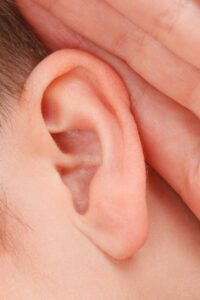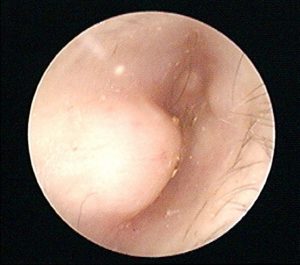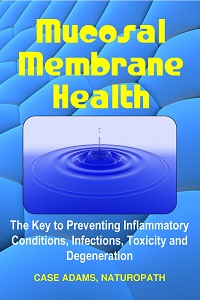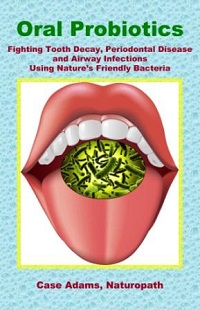Surfers Ear and Swimmers Ear: Natural Approaches
Swimmers Ear and Surfers Ear are quite different, but surfers can have Swimmers Ear in addition to Surfers Ear, and swimmers can have Surfers Ear in addition to having Swimmers Ear. There are common natural strategies and specific natural strategies for each.

Surfer’s and swimmer’s ear can be painful.
This is at least partly because a case of Surfers Ear will make Swimmers Ear more difficult, and a case of Swimmers ear can exacerbate a case of Surfers Ear.
I speak from personal experience. I am a hardcore surfer (surf frequently in cold water) and I have had surfer’s ear for more than 20 years. For at least 15 years, I have had 90% occlusion in one, and more than 75 % in the other. So far I have been able to avoid surgery.
Let’s define each of these conditions, and discuss measures that may help and reduce the risk.
In this article
What is Swimmers Ear?
Swimmers Ear is an infection of the outer ear canal. It is medically termed, external otitis, or otitis externa. It is known to affect one out of ten people at some point or another.
When this infection occurs, the ear canal swells up and the canal opening is reduced. If the infection worsens, it can completely clog the ear canal and can release a puss.
The most noticeable symptom of Swimmers Ear will be some pain around the auricle, the visible portion of the ear. The ear and ear canal may also feel itchy.
Swimmers Ear is basically an infection caused by a number of possible bacteria and fungi. The most common bacteria that causes Swimmers Ear is Pseudomonas aeruginosa. This is because this bacteria species will often live around the waters edge. This includes the sides of pools and spas, and beaches.
Staphylococcus aureus is also a common cause for ear infections. “Staph” can be harder to resolve too.
Unlike Surfers Ear, Swimmers Ear can come and go. The ear canals can be infected for a few days and if treated properly, the infection may reside. We’ll talk more about that below.
But without good ear hygiene, a person who swims often can develop a chronic case of Swimmers Ear. This can get progressively worse, leading to full blockage and significant pain.
What is Surfers Ear?
You might call Surfers Ear the epidemic of cold water surfers. Like a strange twist of payola for cold water stoke, Surfers Ear occurs in those of us who surf consistently in water with temperatures below 60 degrees.

This is what Surfers Ear looks like on a doctor’s otoscope.
Studies from around the world have confirmed that after ten years of cold water surfing between 60 and 80% of surfers will have Surfers Ear, technically “Exostosis”, and over 90% will have it after 20 years.
Among occasional and serious surfers, a 2019 New Zealand study of over 1,300 surfers found that only 30 percent of the surfers had Surfers Ear. But the rate popped up to 56 percent for surfers who were considered “expert.” This study did not measure years of surfing as others studies have. Most studies have correlated time in the water to Surfers Ear risk.
Large population ear exams have revealed that even a fair amount of warm water surfers have moderate cases.
Swimmers can also get Surfers Ear. Those who regularly swim in lakes, rivers and oceans, typically colder than air temperatures, can easily develop Surfers Ear.
Surfers Ear is a painless, creeping bone growth that reduces the ear canal opening, and can eventually close down the ear canal. The bombardment of cold water and wind chill causes the bones just under the thin skin of the ear canal to enlarge.
Polyps (little knobs) begin to form halfway into the canal to the eardrum in what seems an effort to protect the eardrum. Over time the knobs can grow together, choking off the canal. This may leave a space between the knobs and the eardrum where wax and water can get trapped, leading to infection and pain.
When this blocks the ear canal by between 33 and 66 percent, the occlusion is considered moderate. More than 66 percent is considered severe.
If you surf or swim in cold water and notice increasing earwax or water blockages, your knobs are probably getting bigger. However this won’t prevent the growth. The evidence points to both water and wind chill as combined culprits.

I’m surfing tropical waters here – no hood needed.
Because water can more easily become trapped within the ear canals in Surfers Ear, a person with Surfers Ear can develop Swimmers Ear much more easily.
Keep the water out
The key to helping prevent both Swimmers Ear and Surfers Ear is to keep water out of the ear when swimming or surfing. This means a good set of ear plugs.
Ear plugs should block the water from entering the ear canal altogether. Drugstores carry various foam, plastic and silicone plugs. This means that foam plugs are not useful, as water will get through the foam and invade the ears – though foam plugs are better than nothing.
The moldable silicon plugs can be good, depending upon how soft they are. When shaping these for the ear, don’t do the tube and stick too far into the ear canal. Make a ball and squish the ball into the opening and seal around them.
The silicon disc plugs can be easier to put in and keep water water, depending upon how they fit the ear. These should be soft so they don’t irritate the ear canal.
There are a number of special surfing and swimming ear plugs in addition to this, such as vented plugs like’s Doc’s Proplugs®, which will let sound in while keeping water out. Robert Scott, MD invented and patented these vented plugs in the 1970s. Local surf shops often carry these together with a sizing chart to size your ear and get the right size. With these, if you can hear yourself hum on the side with one plug in you’ve got a water seal.
A surf hood or swim cap can also help prevent both Swimmers Ear and Surfers Ear. These will keep the ears warmer and also help keep more water away from the ears.
Keeping the ears warm is especially important when in colder water.
Best bet is a hood and plug combo, keeping the head warmer while holding your plugs in.
Dry the ears afterwards
Another preventive measure is to dry the ears out after swimming, surfing or bathing. You can shake the ears by leaning them down to drain. You can use a towel to dry out the auricles. Don’t use a Q-tip to dry the inside.
You can dry them in the sun or even a (very) low-heat and low-setting blow dryer can work. If you use a blow dryer, consider warming the lower back of the ear (flip the ear forwards), as this is nearby the ear canal without irritating the ear canal itself.
To speed up the drying and help prevent infections you can put a few drops of rubbing alcohol in your ear after your surf or swim. You can also use white vinegar, but a better plan is to mix up a 50/50 solution of rubbing alcohol and white vinegar.
When you’re not in the water
After the ears are dry, keep them warm. Wear a beanie or hoodie when you are at home or sleeping. This will keep your ears warm and allow more blood to come to the area.
In general, its best to stay out of the wind. The combination of a moist ear canal and wind will chill the bones underneath the ear canal skin and tend to close the canal.
Another potential strategy is using an infrared sauna. Letting the infrared heat hit the back of the head (and the back of the ears) can help warm them, keep them dry, and possibly even help reduce the polyp growth.
Washing the ears out with gentle soap and warm-hot water can be okay, but if your ears are clogged there is little use in washing them. The extra water and soap can just gum up the area. Better to just try to keep them clean with a few drops of rubbing alcohol and white vinegar.
Clearing the ears
Surfers Ear and Swimmers Ear can cause a clogging of the ears. When this happens there are a few things to try – but gently! If these don’t work, see an ear doctor or visit a medical clinic, which will typically have tools to remove a clog.
The first thing to try is to get in the shower. Using a handle-showerhead, get the water running warm-hot (not burning hot) and then turn the clogged ear downward and gently spray the hot water up into the ear canal. This is a gentle spray, not a power wash! It’s just to get some warm-to-hot water up into the ear to help loosen the earwax. Keep the ear pointed down to drain water.
A baby ear and nose bulb can also be used to inject some warm-hot water into the ear to loosen up wax. Keep the ear pointed down so the water drains out.
Doctors at medical clinics often use special spray bottles to spray warm water, sometimes with hydrogen peroxide into the ear to remove wax. This type of spray bottle will have a special tip that fits into the ear canal. These are also available on online stores like Amazon.
If you get one of these and try at home, it is best to either use only warm water. If you want to mix with hydrogen peroxide, only use a small amount (like a half teaspoon to a cup of water) of hydrogen peroxide in the solution.
There are some earwax removal tools that you can use to gently(!) scrape the side of the ear canals, to pull out some ear wax. Sometimes you’ll get lucky and grab a chunk of wax, but these should be avoided, as they can damage the ear canal and ear drum.
Better to use the special spray bottle to spray the hydrogen peroxide-warm water into the ear.
If the clog persists, see medical clinic or an ear specialist. An ENT will be equipped with a tiny suction device with a Rosen tip. This beats the slower irrigation method discussed above that most ERs use for earwax removal.
A regular diet of yogurt can significantly help reduce ear infections according to a 2013 study. The researchers tested 46 long-distance swimmers for 8 weeks. They found that those swimmers who ate yogurt each day had significantly less ear pain than swimmers who didn’t eat the yogurt. The yogurt eaters also had less lung infections according to the researchers.
Keep the ears warm
Remember that surfers ear is related to cold water and wind that gets in behind the ears. As Dr. Scott used to tell me, keep the ears warm at all times. He suggested keeping a beanie on at night if the air is cool, in order to keep the ears warm.
In addition to this, I would suggest that warming the ears when close to a heater, fire or sauna is also a great idea. You can also exercise the ear by moving the ears back and forth using the auricle muscles. As the muscles are flexed they will increase blood flow and increase heat to the region.
The point is to keep the ears dry and warm.
Don’t use these remedies
Do not put anything in the ears except for alcohol or white vinegar, or warm water with hydrogen peroxide as mentioned above. Here are some of the problem remedies:
Be careful with undiluted hydrogen peroxide. A straight solution of hydrogen peroxide (even 3%) will foam up in the ear and this is not good for either Swimmers or Surfers Ear. The foaming can greatly irritate the ear canal skin. It can also clog up the ear canals as the foam mixes with earwax. Don’t do it.
This also includes those earwax removal kits with carbamide peroxide. This can also gum up the ear with white foam mixed with earwax.
Don’t use mineral oil and any other type of oil – including garlic oil and tea tree oil – will also gum up and clog the ear canals. Don’t put any type of oil in the ears.
Don’t use ear candles. These are a joke. What you see coming out of the cone is the wax and soot from the candle. Meanwhile they can burn your ears or your hair and leave more soot in the ear canal.
Don’t use Q-tips in the ears – ever. These can do serious damage to the ears, and irritate the ear canals.
Antibiotics for Swimmers Ear
Many doctors will prescribe oral antibiotics and/or ear drops with antibiotics. In a serious case, this may be a last resort.
But we should also make sure there aren’t easier solutions first. You might ask the doctor whether the antibiotic is necessary, because repeated antibiotics in the ear has been known to produce fungal overgrowth in the ear canal.
In this case, fungi such as Aspergillus niger and candida species have been known to take hold in the ear canal, producing a chronic case of Swimmers Ear or worse.
Surfers Ear surgery
If you are a surfer or cold-water swimmer and your ear knobs close up your canal you may require surgery by an otolaryngologist. This will be obvious if you have repeated clogging and infections (Swimmers Ear).
The two surgical techniques used are drilling and chiseling. In drilling, the back of the ear may be cut and folded forward while the bone is ground down. The drill can damage hearing and scar the skin pretty badly. This is now considered and out-dated treatment.
Opt for the chisel technique. This technique was developed in the 1990s and since perfected by Dr. Doug Hetzler of Santa Cruz, CA and others. The technique utilizes tiny 1mm chisels to split and chip the bone off with delicate precision.
The chiseling technique only takes a few hours and causes less skin damage, leading to faster recovery times and a return to the water within weeks. The cost is no laughing matter but insurance will usually cover it. At the moment there are only a handful of docs doing this surgery.
A review of cases found that 68 percent of the patients reported improved life quality after the surgery. And 14 percent of cases after the surgery have complications. Complications include eardrum rupture, TMJ dysfunction and facial nerve paralysis.
Regrowth can occur after surgery. The jury is still out, but chiseling may cause less grow-back than drilling. Best to prevent it before it gets this far anyway.
Keep the ears warmer and drier and you’ll be surfing and swimming for many years.
SCIENTIFIC REFERENCES:
Vallée A. External auditory exostosis among surfers: a comprehensive and systematic review. Eur Arch Otorhinolaryngol. 2024 Feb;281(2):573-578. doi: 10.1007/s00405-023-08258-5.
Simas V, Remnant D, Furness J, Bacon CJ, Moran RW, Hing WA, Climstein M. Lifetime prevalence of exostoses in New Zealand surfers. J Prim Health Care. 2019 Apr;11(1):47-53. doi: 10.1071/HC18097.
Landefeld K, Cooper JS. Surfers Ear. 2018 Dec 27. StatPearls. Treasure Island (FL): StatPearls Publishing; 2019 Jan-.
Okuyama Y, Baba A, Ojiri H, Nakajima T. Surfer’s ear. Clin Case Rep. 2017 Apr 4;5(6):1028-1029. doi: 10.1002/ccr3.929. eCollection 2017 Jun.
Hajioff D, MacKeith S. Otitis externa. BMJ Clin Evid. 2015 Jun 15;2015. pii: 0510.
Salarkia N, Ghadamli L, Zaeri F, Sabaghian Rad L. Effects of probiotic yogurt on performance, respiratory and digestive systems of young adult female endurance swimmers: a randomized controlled trial. Med J Islam Repub Iran. 2013 Aug;27(3):141-6.
Wang MC, Liu CY, Shiao AS, Wang T. Ear problems in swimmers. J Chin Med Assoc. 2005 Aug;68(8):347-52.














